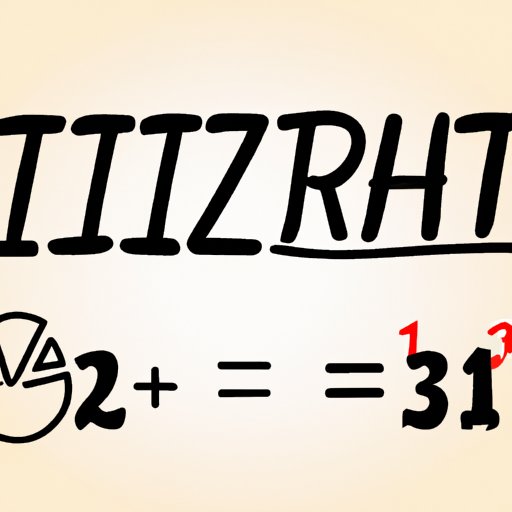Introduction
Pi is a mathematical constant that represents the ratio of a circle’s circumference to its diameter. Its decimal representation goes on infinitely, without repeating any sequence. Pi has been studied and revered for centuries, and today it continues to play an important role in many fields of study, including physics, engineering, and computer science. In this article, we will explore everything you need to know about pi, including how to calculate it using various methods, its historical and scientific significance, and fun ways to memorize it and celebrate its existence.
A Beginner’s Guide to Calculating Pi: Simple Methods for Accurate Results
There are many methods for calculating pi, some of which are simpler than others. The Monte Carlo method is one such method, and involves randomly placing points inside a circle and outside of it, and then tallying up the number of points inside the circle versus the total number of points. The area of the circle can then be approximated and used to calculate pi. Another method is the infinite series formula, which involves adding up a series of infinite fractions to arrive at a value for pi. There are many other methods as well, each with their own strengths and weaknesses.
Regardless of the method used, it is important to follow certain steps to ensure accurate results. For example, when using the Monte Carlo method, it is important to place as many points as possible to increase accuracy. When using the infinite series formula, it is important to use enough terms in the series to arrive at a precise value for pi.
Why Pi Matters: Exploring the History and Significance of This Famous Number
Pi has been studied for thousands of years, starting with the ancient Egyptians and Babylonians. However, it was the ancient Greeks who first calculated pi with impressive accuracy. The Greek mathematician Archimedes calculated the value of pi using a geometric approach, which involved inscribing polygons inside and outside a circle and calculating their perimeters. This value was later refined by other mathematicians, including Chinese and Indian scholars.
Today, pi continues to be used in many fields of study, including geometry, physics, and engineering. Its precise value is crucial for accurate calculations when designing anything round, from car wheels to satellite dishes. Pi is also used in GPS systems to pinpoint exact locations on Earth, and in medical imaging to diagnose and treat diseases.
Fun Ways to Memorize Pi: Mnemonic Devices and More
Despite its infinite nature, many people find joy in memorizing as many digits of pi as possible. While it may seem like a daunting task, there are many fun and creative ways to memorize pi. One popular method is to use mnemonic devices, such as the phrase “May I have a large container of coffee” to remember the first eight digits of pi (3.1415926). Other rhymes and phrases can also be used to help memorize longer strings of digits.
Practicing regularly and challenging oneself to learn more digits is also helpful for memorization. There are even online competitions for memorizing digits of pi, where participants can compete against one another to see who can recite the most digits in a set amount of time.
Advanced Pi Calculations: Techniques Used by Mathematicians and Scientists
For more advanced calculations, mathematicians and scientists use more complex methods for calculating pi. One such method is the Bailey-Borwein-Plouffe formula, which calculates individual digits of pi without needing to calculate all previous digits. Another method is the Chudnovsky algorithm, which is used to calculate digits of pi with extreme accuracy.
These methods are used in many real-world applications, such as cryptography and finance. However, they are also limited due to the vast amount of computing power needed to use them effectively. Ongoing research is focused on finding even more accurate ways to calculate pi, potentially utilizing quantum computing or other advanced technologies.
Pi Day Celebration: Hosting a Party Filled With Math and Fun
Pi Day is a celebration of the mathematical constant pi, and is observed on March 14th (3/14), in reference to the first three digits of pi. While not an official holiday, Pi Day is celebrated around the world with a variety of events and activities, including pie eating contests, math-themed scavenger hunts, and even a Pi Day parade in San Francisco.
Hosting a Pi Day party is a great way to celebrate this fascinating number with friends and family. Decorations can include pi-themed banners, balloons, and tablecloths. Activities can include pi recitation contests, math trivia games, and of course, pie baking competitions. It’s a fun way to embrace one’s inner geekiness and celebrate one of the most fascinating and mysterious constants in all of mathematics.
Conclusion
Pi is a number that has captivated mathematicians and scientists for centuries, and continues to be an important studied and revered number today. In this article, we explored how to calculate pi using various methods, its historical and scientific significance, fun ways to memorize it, advanced calculations used in science and mathematics, and how to celebrate it through a Pi Day party. By exploring the world of pi, we can gain insight into the mysteries of mathematics and science, and cultivate a lifelong love of learning.
